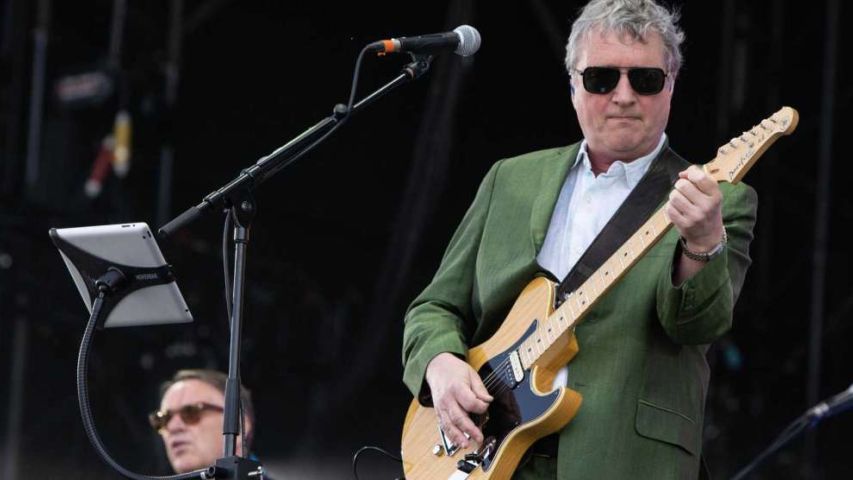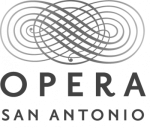
Tony Scalzo of Fastball grew up a fan of hardcore punk rock but also loved classic British pop bands — two polarizing styles in his conservative Orange County, California. He wasn’t aware of a musical middle ground until he heard Squeeze — or U.K. Squeeze, as they initially were billed in the states — on A&M’s 1979 “No Wave” sampler of bands on the label.
“Their music was aggressive but also melodic,” Scalzo said. “It was just what I was looking for.”
When the offer came for Fastball to open several Squeeze theater dates, including Monday at the Tobin Center for the Performing Arts, Scalzo’s mind went back to the first Squeeze song he ever heard: “Take Me, I’m Yours.”
The appetizer goes with the main course like spring rolls and pad Thai. Besides a similarity in style, Scalzo said, “they have two songwriters, two singers, and so do we,” referring to partner Miles Zuniga.
The core of Squeeze came together in 1973 when Chris Difford placed a “guitarist wanted” card in a South London candy shop window and Glenn Tilbrook was the only one who answered it.
You can hear some Squeeze in Fastball’s infectious rock, just as you can hear the Beatles in Squeeze and the Everly Brothers in the Beatles, whose name, let’s not forget, was in homage to the Crickets of sweet-singing West Texan Buddy Holly. Until doctors discover that goosebumps are bad for you, harmonic, hooky, rock ’n’ roll will always be a thing.
It starts up front with a singer whose vocals make you feel 17, and in Tilbrook, Squeeze has a one-man Lennon/McCartney. His elastic voice is a gymnast and the song is a floor routine.
Difford writes the clever lyrics to inspire Tilbrook’s melodies and sings crowd favorite “Cool for Cats” every night, but in concert he’s like Bernie Taupin playing guitar for Elton John. Though Tilbrook, also an exceptional guitarist, is the main Squeeze, Difford is essential, with his gruff harmonies laying down the crust to hold Tilbrook’s creamy center.
“The shows have been great,” Scalzo said via phone from California.
Since Aug. 1, Squeeze has rotated arena concerts opening for Hall & Oates with headlining shows in intimate theaters, where no one yells out “Maneater!” between songs.
“It’s a full-on production,” Scalzo said of the staging and layered instrumentation that are a necessity on an arena tour, but a luxury in a theater. “And they play all the hits.”
What hits? Fans and bowled-over reviewers were calling Squeeze “the new wave Beatles” after the 1980 release of “Argybargy,” a power-pop-pub-rock masterpiece, but the band never broke big into the mainstream. You’d think the omnipresent “Tempted,” a staple of the new classic rock, was a smash hit when it came out, but it peaked at No. 49 in 1981. It’s a song about infidelity on the road, but its use on TV commercials for Burger King and Heineken target a more age-appropriate temptation. A newborn at a Squeeze concert brings the average age down to 62.
The band’s only Top 40 hit was “Hourglass,” from the 1987 comeback LP “Babylon and On,” reaching No. 15 thanks to a corny, surrealistic video perfect for MTV.
Fastball has twice the hit singles, with “The Way” and “Out of My Head,” leading to a platinum album for 1998’s “All the Pain Money Can Buy.” But following Fastball’s 30 minutes, Squeeze needs nearly two hours on this “Nomadband” tour to play all their fan favorites, plus two songs from 2019 LP “The Knowledge” for bathroom breaks.
The most chart-worthy Squeeze songs, including “Pulling Mussels (From the Shell),” “Up the Junction,” “Another Nail in My Heart,” “Goodbye Girl,” “Is That Love” and “Annie Get Your Gun,” did not live on Top 40 radio. But they were heard everywhere: on college radio, at parties, on the river, in the car. Squeeze made whatever lame town you came of age in a little more livable.
If we can compare the early ’80s new wave to the contemporary rock scene, Elvis Costello was Radiohead and Squeeze was Coldplay. E.C. was the difficult genius that only smart people got, while Squeeze was more accessible, which made them snob-bait.
The album they recorded together — 1981’s Costello co-produced “East Side Story” — was made to fix that by reaching beyond new wave pop to country (“Labelled With Love”), soul (“Tempted,” “In Quintessence”) and elements of progressive rock (“F-Hole,” “Mumbo Jumbo”).
While Squeeze was recording the album, their hero John Lennon was shot to death by a deranged fan. Not much got done for a few days. The dark cloud continued when “East Side Story,” which critics praised as the band’s best album yet, inspired a cult, not a horde. The first band breakup came a year late, but since then, Squeeze has had more comebacks than the McRib sandwich.
One number the band plays every night is their first swan song, 1982’s “Black Coffee in Bed.” About moving on to better things after a painful breakup, the lyrics mirror the band’s situation at the time. Shared visions can get messy.
But when Difford and Tilbrook weren’t in a band together for the first time since the day they met, they became close friends. Which was also the case with Scalzo and Zuniga, who came back tighter after the first hiatus. Stepping away for a bit, the co-leaders of Squeeze realized that there was no better thing awaiting, so the magical melody tour rolls on.
Texas music writer Michael Corcoran is the author of "Ghost Notes: Pioneering Spirits of Texas Music."




